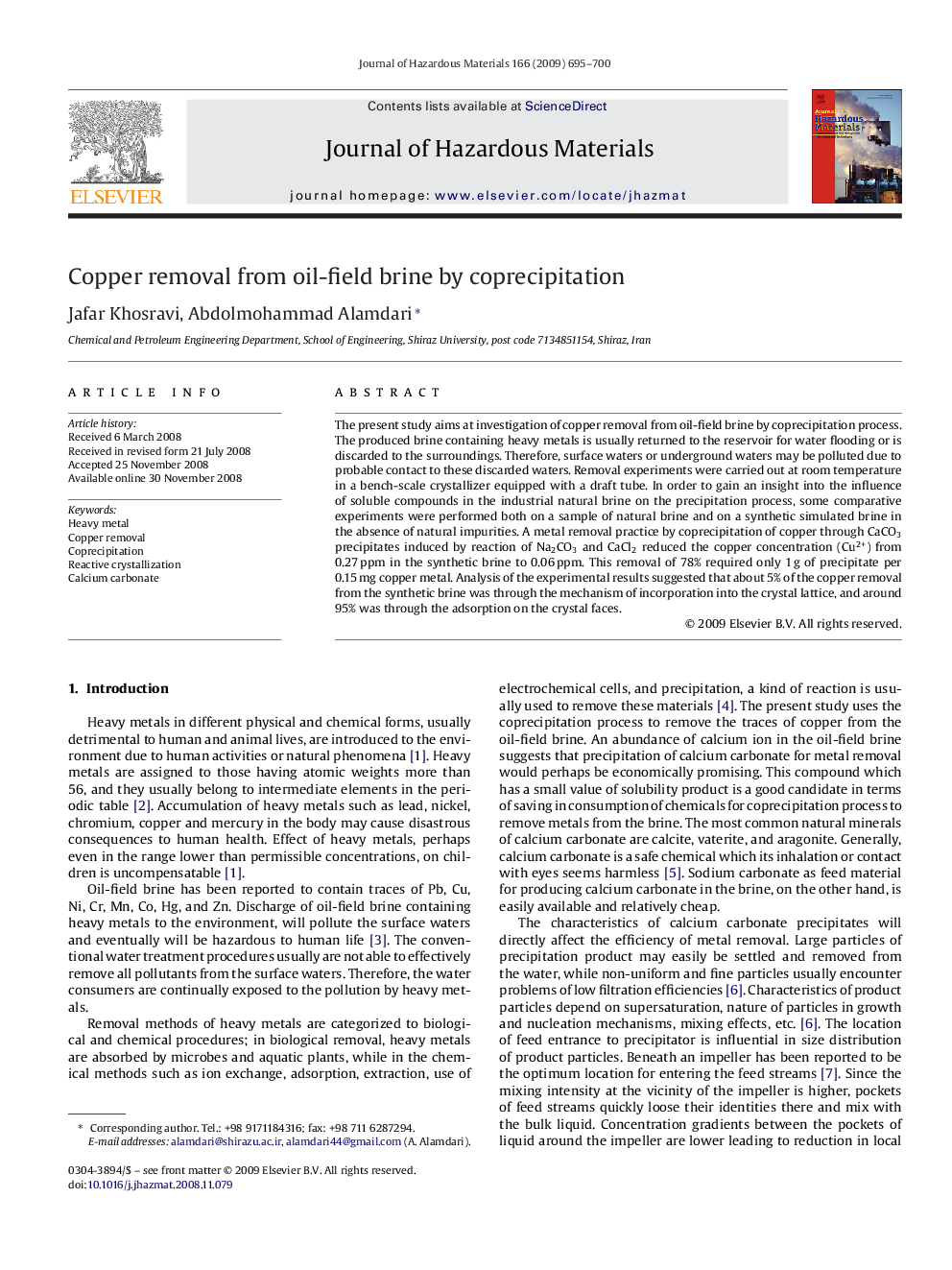| Article ID | Journal | Published Year | Pages | File Type |
|---|---|---|---|---|
| 581998 | Journal of Hazardous Materials | 2009 | 6 Pages |
Abstract
The present study aims at investigation of copper removal from oil-field brine by coprecipitation process. The produced brine containing heavy metals is usually returned to the reservoir for water flooding or is discarded to the surroundings. Therefore, surface waters or underground waters may be polluted due to probable contact to these discarded waters. Removal experiments were carried out at room temperature in a bench-scale crystallizer equipped with a draft tube. In order to gain an insight into the influence of soluble compounds in the industrial natural brine on the precipitation process, some comparative experiments were performed both on a sample of natural brine and on a synthetic simulated brine in the absence of natural impurities. A metal removal practice by coprecipitation of copper through CaCO3 precipitates induced by reaction of Na2CO3 and CaCl2 reduced the copper concentration (Cu2+) from 0.27Â ppm in the synthetic brine to 0.06Â ppm. This removal of 78% required only 1Â g of precipitate per 0.15Â mg copper metal. Analysis of the experimental results suggested that about 5% of the copper removal from the synthetic brine was through the mechanism of incorporation into the crystal lattice, and around 95% was through the adsorption on the crystal faces.
Related Topics
Physical Sciences and Engineering
Chemical Engineering
Chemical Health and Safety
Authors
Jafar Khosravi, Abdolmohammad Alamdari,
